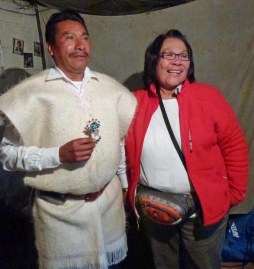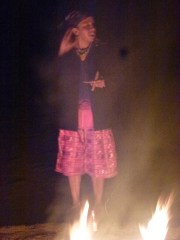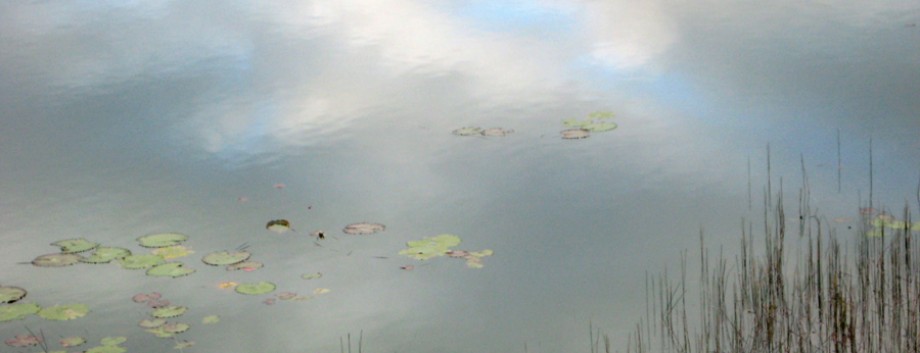Note from Carla Woody: In December 2012, I offered a special Winter Solstice “Entering the Maya Mysteries” program. Kenosis Spirit Keepers sponsored Charlene Joseph, a Hopi Spirit Keeper from Moencopi, on this journey as a part of ongoing efforts to bring together Indigenous Wisdom Holders for mutual spiritual support. Char’s presence, and the heartfelt connections she made with her Maya relations, brought even greater depth to our shared experiences. Truly, it was a gift to have her with us. Below she has generously shared her journey and what it meant to her.
My Mexico/Guatemala Spiritual Adventure
By Charlene Joseph
What an adventure! I traveled to Peru in 2009 and had a very rich cultural and spiritual experience. Knowing the Hopi ancient history and growing up in the traditional Hopi way, I was able to connect to the indigenous people and their way of life. My travel to Mexico and Guatemala in December 2012 was just as spiritual and the connection to the people culturally and traditionally was immense, just as it was when I went to Peru.

Charlene Joseph and Carla Woody
departing for Chiapas, Mexico.
I spent one week in Tucson with my daughter’s and son’s families the week before my trip. The day before we were to fly out of Phoenix, I left Tucson for Phoenix to meet up with Carla Woody, the organizer of the trip, and spend the night. Not only did I have trouble finding my way to the hotel, but the next morning as I was reorganizing my luggage, I discovered that I didn’t have my passport! I had left it in Tucson.
It was still early enough to drive back to Tucson and be back before our plane left at 3:00 p.m. so I called my daughter. Even while studying for her final exams at University of Arizona, it was very thoughtful of her to bring my passport halfway to meet me at Casa Grande. So now, I’m set with my passport and ready to board the plane to Mexico, wondering what laid ahead for me.
San Cristóbal de las Casas
As we were driving to San Cristóbal from Tuxtla after spending the night, I thought about my family back home, the upcoming Hopi New Year and prayers that I will miss for the first time in years, my father who taught me about the Hopi migration from the South. At the same time, I was enjoying the beautiful scenery.
Arriving in the colonial town of San Cristóbal and checking into our hotel felt to me like we were in seclusion. It was chilly in the hotel lobby and I was wondering why the heater was not on. Once we got checked in and made our way to the room, I found it was just as cold there. Soon found out that there are no heaters. We had to dress warm at night or even wear our jackets to bed. During the day the weather got very warm so we soaked in as much sun and warmth to our liking.

Processional during Festival of Our Lady of Guadalupe.
©2012 Carla Woody.
It was lively day and night in downtown San Cristóbal with fireworks, parades honoring the Lady of Guadalupe, locals selling their art and craft work, food, and even fresh boiled corn, which was my favorite! Also many tourists walked the streets looking, eating, buying from locals, and just enjoying their time.

Family kitchen.
©2012 Carla Woody.
One evening we drove about twenty minutes up to the indigenous village of Chamula to participate in ceremony with Don Xun Calixto. As we were driving through the village, I saw ladies and young girls washing clothes at the water spring, just like we used to when I was growing up. That scene took me way back to my childhood days. I felt at home seeing the people working in their gardens, fields, drying their harvest, carrying water from the water spring to their homes, and firewood for the evening loaded on the person’s back and everyone working in harmony, it seemed.
We stopped at the bottom of a hill and walked up the steps to Don Xun’s family home, a traditional brick home with an outside shed-like kitchen where they also kept their harvest of corn, beans, squash, variety of melon, and cauliflower stored. On the open fire-pit was a pot of boiling stew being prepared for our meal with the family. In the yard chickens were being fed, and the group gathered talking and admiring the craft work the family had for sale.

Don Xun Calixto, Spiritual leader of San Juan Chamula, and Charlene Joseph.
©2012 Carla Woody.
Don Xun started the ceremony in the main house in front of the altar as we sat around him on wooden benches or chairs. We sat quietly and watched while one group member did the interpretation. After ceremony was over, I gave a talk and encouraged Don Xun to continue his and his people’s way of life, that it is good to find that they are still growing their own food and eating off of the land. I shared with him that my people, the Hopi, live that way also but that we are slowly forgetting. I told Don Xun that what I shared are my father’s words that he had wanted me to tell our people from the South and that we are connected. We are brothers and sisters. Don Xun was happy to hear this.
I presented him with a katsina rain spirit doll (Corn Boy) and asked him to remember my people on Hopi when he is doing his prayers because we need rain for our corn to grow. I asked him to send the rain clouds to Hopi with his prayers because we have been getting little moisture and we need it for our corn to grow. Don Xun chuckled and said that they did not get enough rain this year either.
Southern Guatemala

Charlene Joseph and Don Nicholas, who attends San Maximón, in Santiago Atitlán.
©2012 Carla Woody.
A few days later, we left for Guatemala and were on the road all day. On the way down to Lake Atitlán, Guatemala, there were cornfields everywhere, all the way from San Cristóbal, Mexico to Guatemala. I was happy because this made the connection for Hopi, and me personally, even more significant. Corn is very important to Hopi just as it is to the Maya people in the South.
Lake Atitlán is very beautiful, especially at sunset and sunrise. The weather was much warmer at night which made it very comfy to sleep. In the morning, after a night’s rest, we got on the boat to take a 40-minute ride across the lake to Santiago Atitlán, below a volcanic mountain. There we participated in ceremony with Don Nicholas honoring San Maximón. After ceremony, we headed back to our hotel to board our private bus for Antigua. It was a 3-hour ride and we got there around 8 p.m.

Ajq’ij Felipe Mejia (Maya Daykeeper) at Iximche.
©2012 Carla Woody

Ajq’ij Apab’yan Tew (Maya Daykeeper) at Iximche.
©2012 Carla Woody
This time we checked into our hotel for three nights. On December 15, we drove to Iximche for a fire ceremony with Maya Daykeepers Felipe Mejia and Apab’yan Tew at a sacred place where there are pyramids. It felt very welcoming to see school children playing games and having a cookout. It was very lively! The ceremony was interesting and was very colorful. Again, I felt a strong connection to the Mayas when offerings were made to the fire with food. I shared with them that Hopi does the same thing. We also feed the fire and make food offering to the sun. There were other similarities that I observed that reaffirmed the history of the Hopi to the Mayas of the South.
Palenque

Temple of the Sun at Palenque,
Winter Solstice 2012.
©2012 Carla Woody.
Nearing the end of our travels and looking forward to Palenque in the jungle. We left Antigua, went through border checkpoint, and got back into Mexico on December 17th. Took the whole day to get back to San Cristóbal where we spent two more nights before heading to Palenque where the great pyramids are in the jungle.
It was amazing! I can’t even begin to express how I felt when we went to the pyramids in Palenque. Magazines, movies, and pictures are never the same as experiencing the real thing. Driving to Palenque through the mountains was awesome, too. All of a sudden a person or people will come out of the forest, people walking along the road with hoes, wood, carrying traditional pottery filled with water. Wow!
We visited the pyramids on December 20th. We did a great amount of walking and climbing at the pyramids. I managed to climb up several with the help of my group members, and especially Ed from Prescott, Arizona who pulled me up and helped me down. It was interesting to find that the temples are named for the sun, moon, snake, corn, and others I can’t quite remember. Hopis honor those same things. There was a ballcourt and a shrine representing the Twin Warriors and the Grandmother which Hopi includes in the Hopi Way of Life ceremonies today.
December 21st was the day of Winter Solstice in Mayaland. On Hopi, Winter Solstice is also happening at this same time when the men are in the kiva praying and preparing for the New Year. A time of sacrifice without sleep, praying and working hard so life can continue. They do this for, not only the Hopi, but for all life on earth including animals, plants, sun, moon, water, Mother Earth and all humankind.
On this Winter Solstice Day, the rain was coming down hard and it had started the night before. Hoping that the rain would subside, we left at seven in the morning for the pyramids to observe Winter Solstice. Sitting on the steps of the Temple of the Sun waiting and getting drenched, after a couple of hours, some of us decided to go back to our cabanas to dry, We didn’t get to observe the Solstice because the rain took over until five in the afternoon. As I always say, things happen for a reason!
This journey to Mexico and Guatemala reaffirmed the Hopi migration and some history from the South for me and the Hopis. My father talked about Palatqwapi , the Snake Serpent, the Twin Warriors and their Grandmother, and more that they brought with them when migrating from the South. These are all still very much alive today in the Hopi Way of Life.
My father always emphasized that we need to keep faith and continue the Hopi Way to keep the world evolving. I feel very humbled to have participated in this journey and to be able to honor my father and his knowledge and wisdom in this way.























